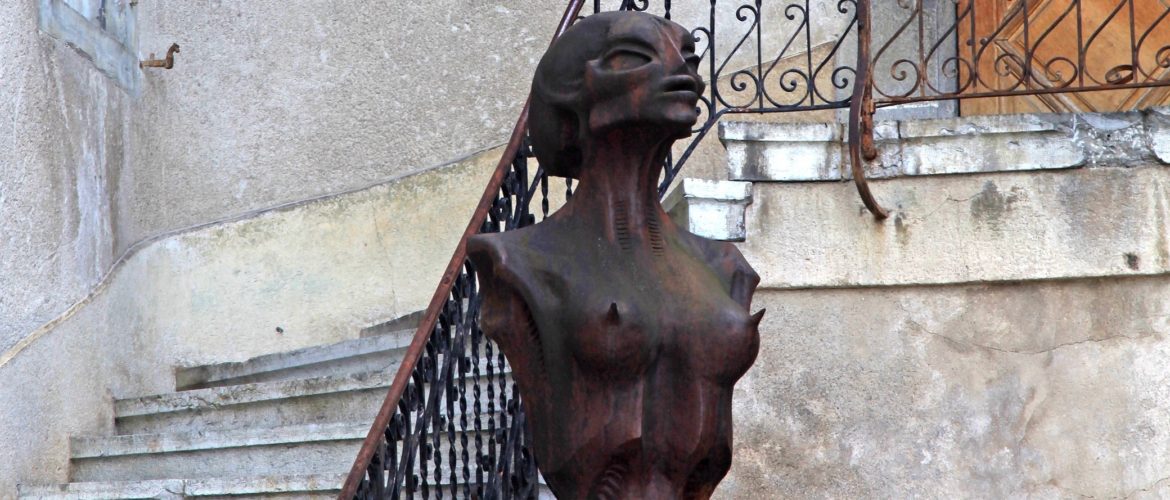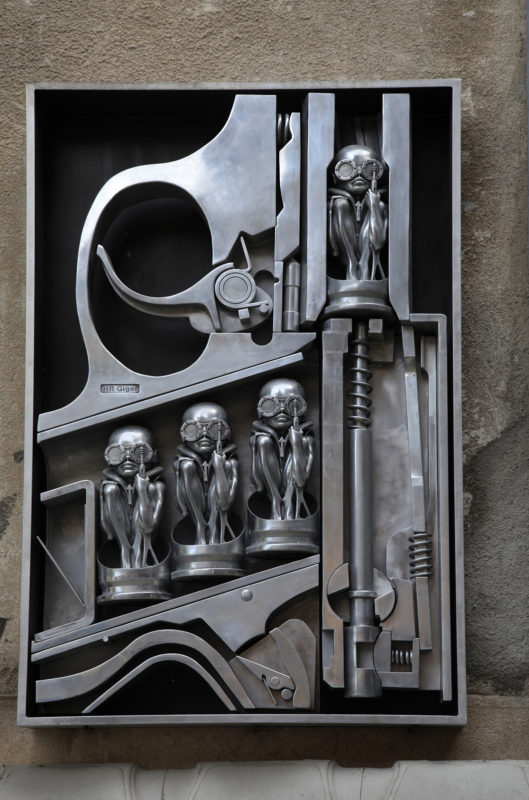The Dark Psyche of H.R. Giger: Influences and Inner Demons

Hans Ruedi Giger (H.R. Giger), a world-famous creator of the iconic xenomorph in Ridley Scott’s Alien, went down into contemporary art history as a master of biomechanical art. Yet, few people know that for Giger, art served as a form of therapy for his inner turmoil and psychological problems. The artist’s skilled fusion of human flesh and horrifying mechanical elements has built a tradition on its own, with recognizable and provocative imagery associated with his name.
H.R. Giger’s Fascination with Macabre
Giger reported experiencing vivid nightmares in childhood, which caused a dual effect of sleeplessness and inspiration. Those visions persisted in adulthood, eventually becoming the raw material for his work. Following a Freudian approach, the artist explored his repressed desires and fears through art. His creations held lots of resemblance to the surreal, dreamy images by Salvador Dali and cosmic horror images by H.P. Lovecraft. These two major artistic influences helped Giger refine his visual language by focusing on the creative fusion of organic forms with industrial machinery.
Obsession with Death and Sexuality
Giger was also reported to be obsessed with death and sexuality, and his relationship with the actress Li Tobler, who committed suicide in 1975, solidified that link in his psyche. Tobler’s death shook Giger and led to the emergence of death-infused erotic images in his creative portfolio. The artist used the image of his beloved in many works, blending themes of sensuality and decay in gloomy images. Some prominent examples include the aluminum sculpture Birth Machine and the Necronomicon series of paintings.
H.R. Giger’s art frequently features phallic and vaginal symbols, combined with skeletal machines. The culmination of this artistic pursuit is evident in The Spell (1974), a triptych with a crucified figure, created in a gothic style, with ritualistic horror images and motifs of entrapment. Many of Giger’s infernal images served as inspirational motifs for cyberpunk movies, tattoo and fetish cultures worldwide, and even nanotech architecture designs. A unique art object is the erotic, movable microphone stand “The Bitch,” designed by the artist upon the order of Korn’s member, Jonathan Davis.
Art as Therapy for H.R. Giger
The nightmarish dreamscapes of H.R. Giger became a form of psychotherapy for the artist. Though being a victim of childish nightmares, he managed to transform that suffering into an unsettling yet inspiring art legacy. Giger’s images enabled an entire generation of horror films, from Alien to Species, pushing the boundaries of imagination in the form of dark biomechanical meshes.

